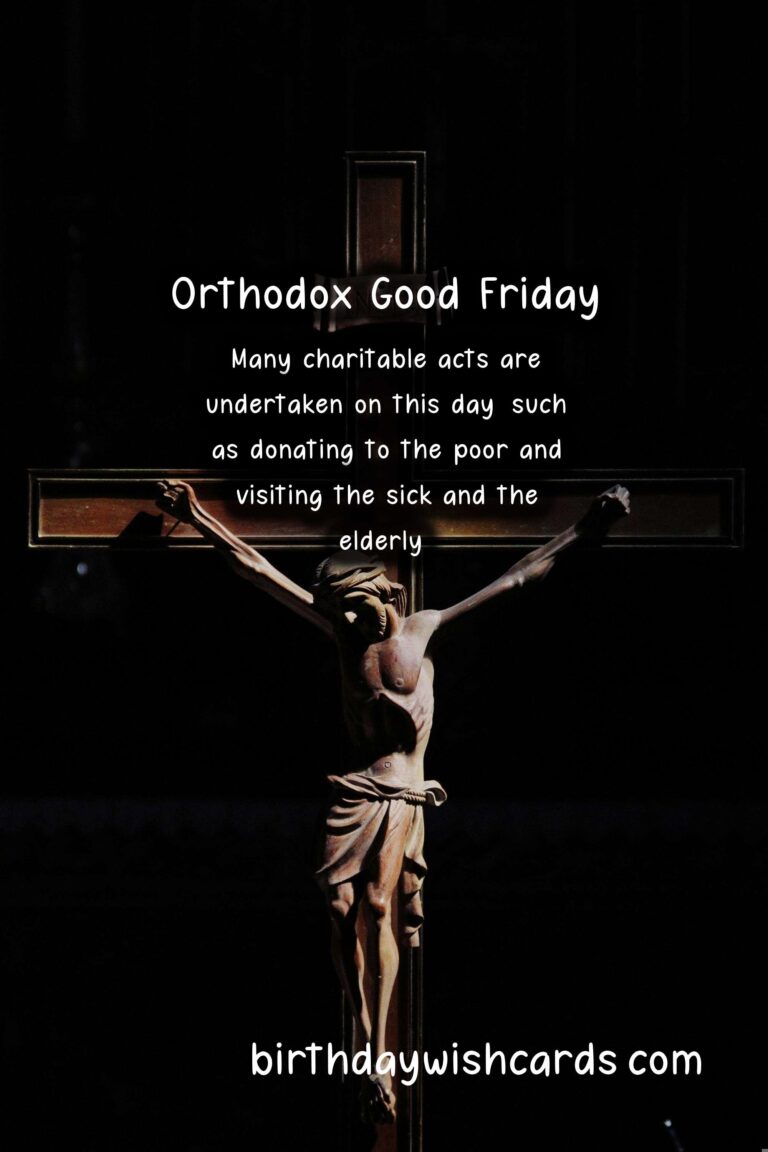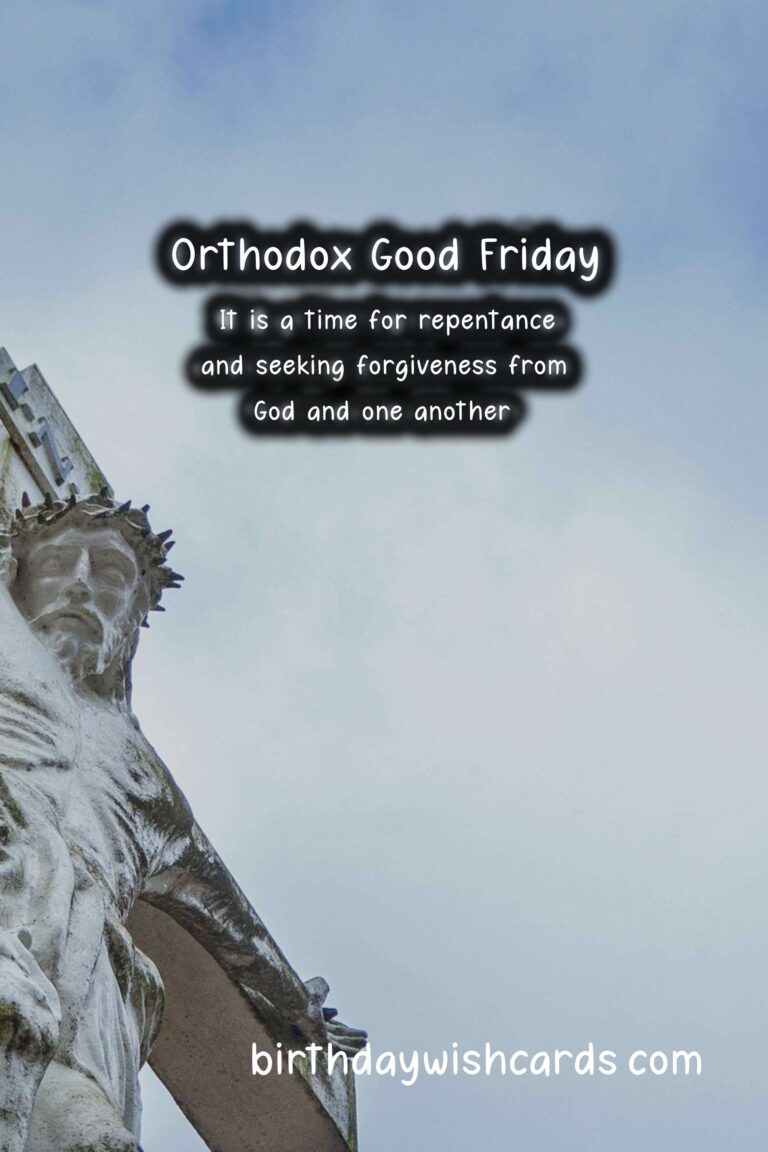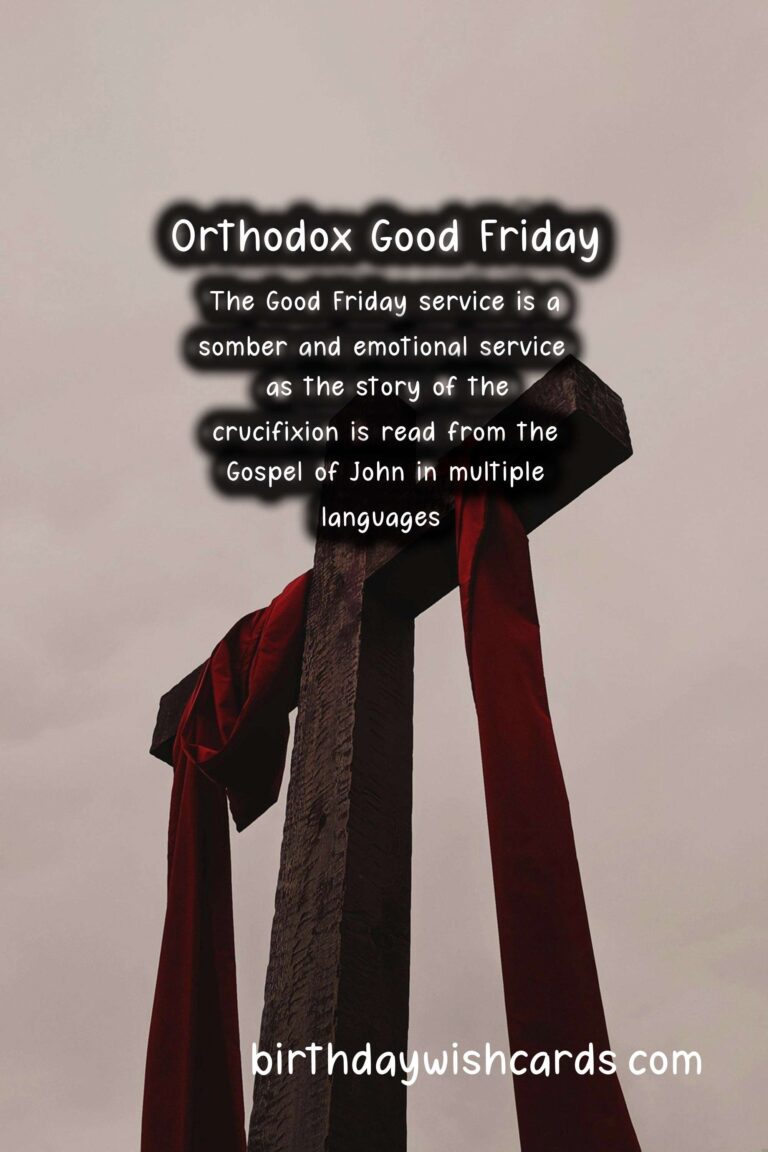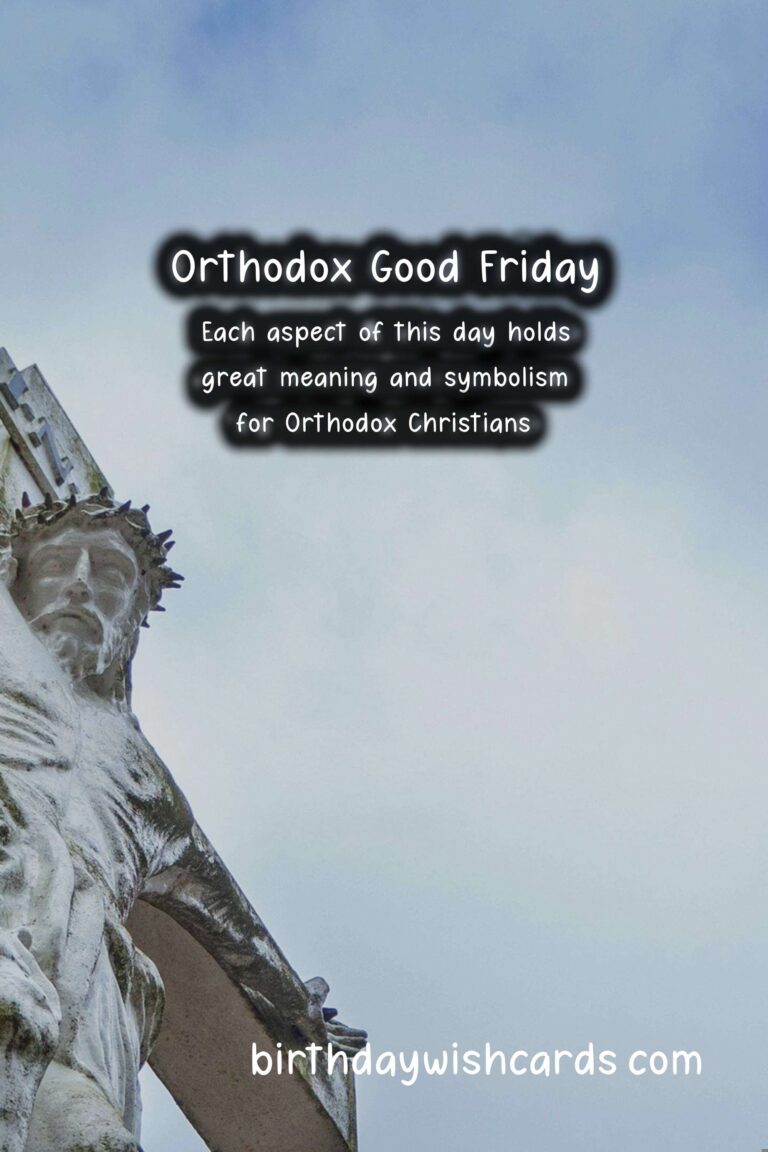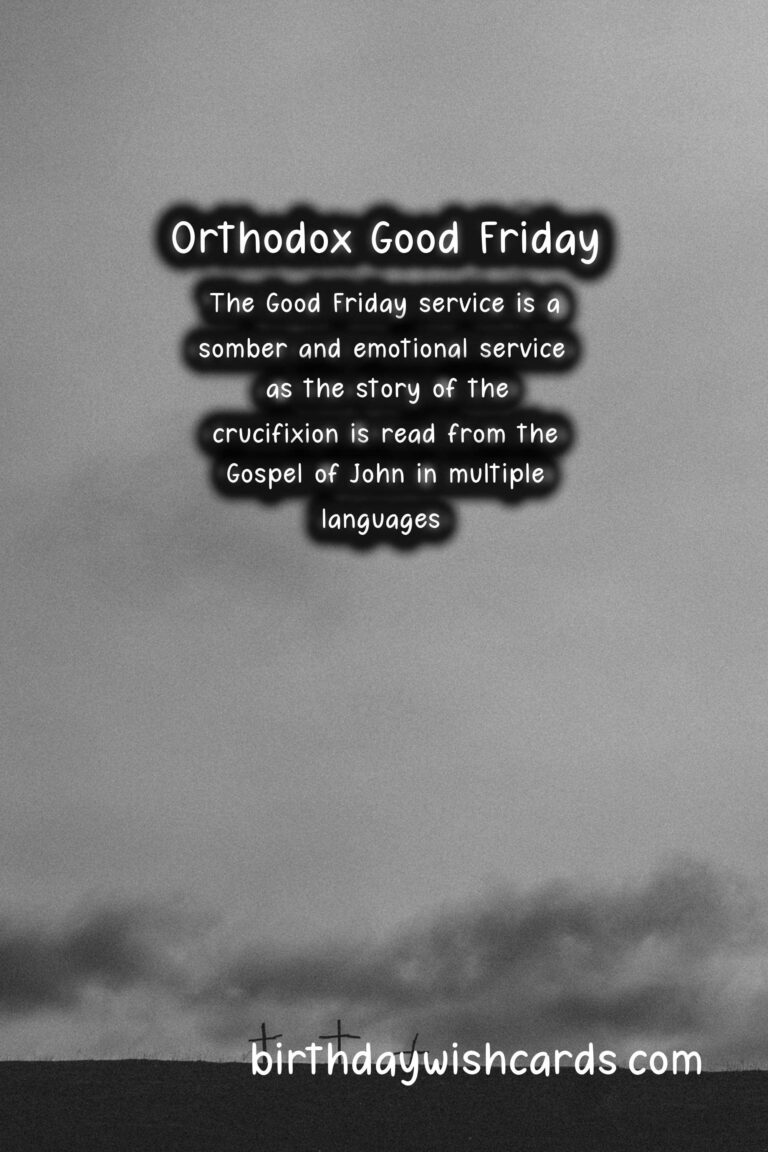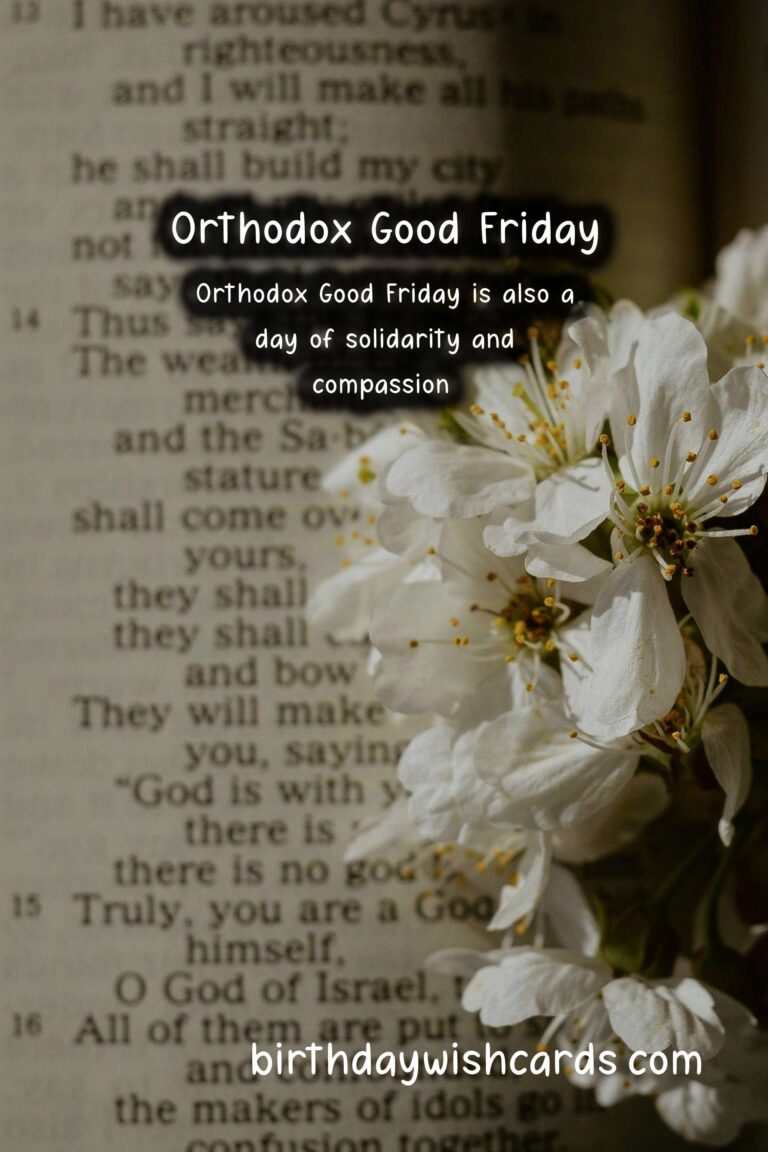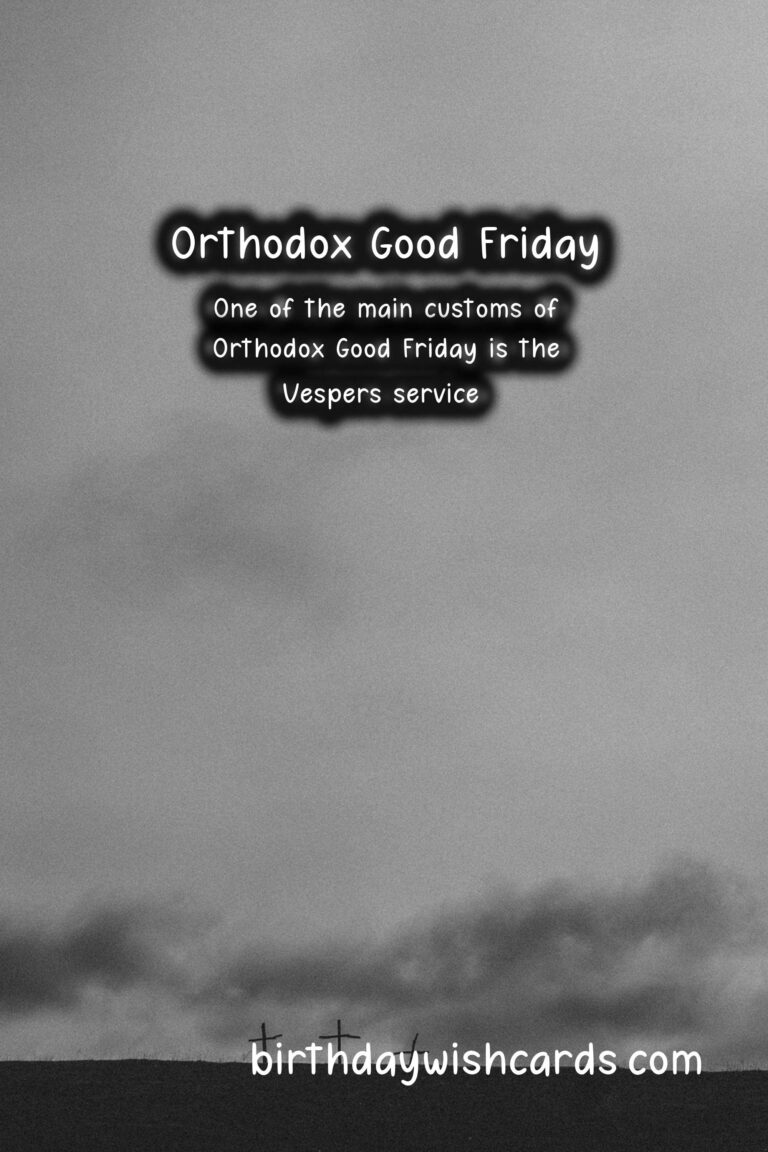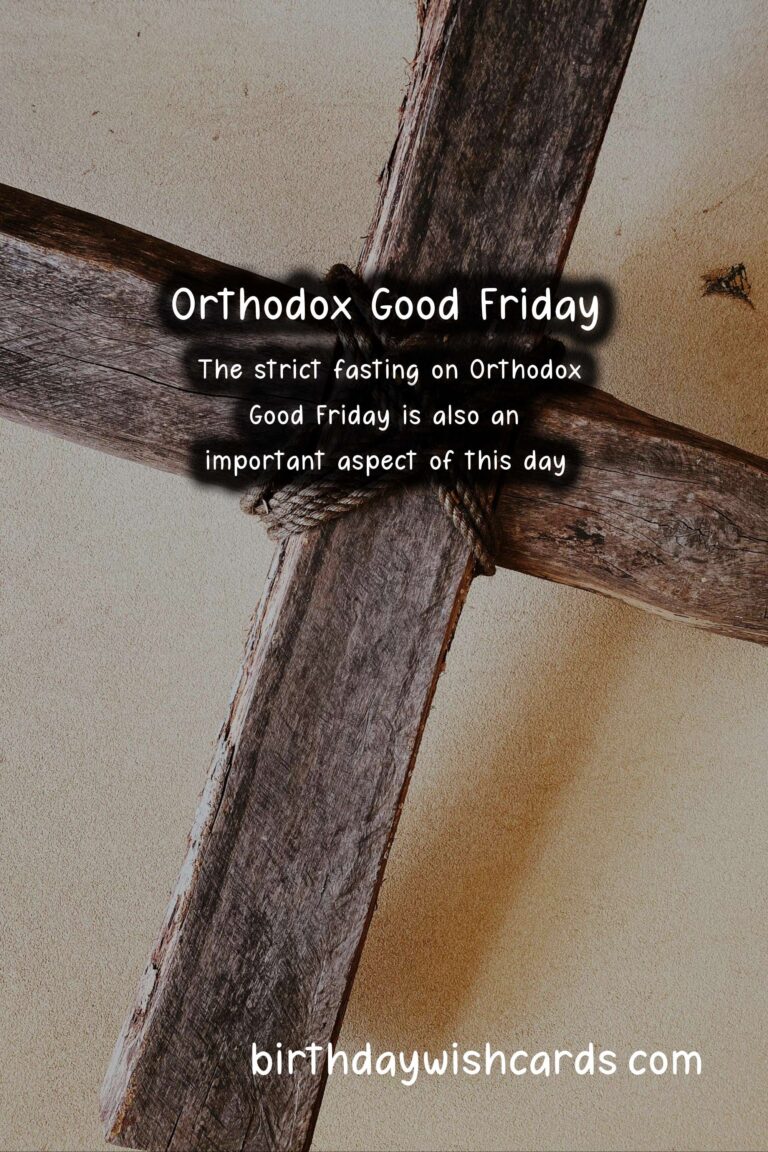
April 14 is known as Orthodox Good Friday, and it holds great significance in the Orthodox Christian religion. Among all the Christian denominations, Orthodox Christians celebrate Easter and Good Friday on a different date than the rest of the Christian world.
According to the Orthodox calendar, Good Friday falls on the Friday before Easter Sunday, which is also known as Pascha. This year, April 14 is observed as Orthodox Good Friday in countries such as Greece, Russia, and Ukraine.
Orthodox Good Friday commemorates the crucifixion of Jesus Christ. It is a day of mourning and fasting, and church services are held to remember the sacrifice made by Jesus for humanity.
The traditions and customs observed on Orthodox Good Friday are rooted deep in history and have been passed down through generations. Each aspect of this day holds great meaning and symbolism for Orthodox Christians.
One of the main customs of Orthodox Good Friday is the Vespers service. This service is divided into three parts – the chanting of Psalms, the hymn of kathisma (meaning sitting), and the Good Friday service. The Good Friday service is a somber and emotional service, as the story of the crucifixion is read from the Gospel of John in multiple languages.
Another tradition observed is the procession of the epitaphios, which is a cloth embroidered with the image of Christ. This represents Christ’s burial, and it is carried in a procession around the church by the priests and the faithful. During this procession, the faithful offer prayers and lay flowers at the foot of the epitaphios.
The strict fasting on Orthodox Good Friday is also an important aspect of this day. It is a day of abstinence from meat, dairy, and oil. This fast is observed as a sign of respect and reverence for Christ’s sacrifice on the cross.
Furthermore, Orthodox Christians also believe in the ‘Epitaphios thaumata,’ which translates to ‘miracles of the epitaphios.’ It is believed that the cloth carrying the image of Christ has healing powers, and touching it can cure a person of various ailments.
On this day, Orthodox Christians reflect on the suffering and death of Christ and also remember their own sins and failings. It is a time for repentance and seeking forgiveness from God and one another.
Orthodox Good Friday is also a day of solidarity and compassion. Many charitable acts are undertaken on this day, such as donating to the poor and visiting the sick and the elderly. This is seen as a way of carrying on the spirit of Christ’s love and sacrifice.
In conclusion, April 14 is celebrated as Orthodox Good Friday by Orthodox Christians all around the world. It is a day of deep significance and reverence, as it marks the crucifixion of Jesus Christ and his ultimate sacrifice for humanity. The traditions and customs observed on this day reflect the deep-rooted beliefs and values of the Orthodox Christian faith.
April 14 is known as Orthodox Good Friday, and it holds great significance in the Orthodox Christian religion. According to the Orthodox calendar, Good Friday falls on the Friday before Easter Sunday, which is also known as Pascha. This year, April 14 is observed as Orthodox Good Friday in countries such as Greece, Russia, and Ukraine. Orthodox Good Friday commemorates the crucifixion of Jesus Christ. It is a day of mourning and fasting, and church services are held to remember the sacrifice made by Jesus for humanity. The traditions and customs observed on Orthodox Good Friday are rooted deep in history and have been passed down through generations. Each aspect of this day holds great meaning and symbolism for Orthodox Christians. One of the main customs of Orthodox Good Friday is the Vespers service. This service is divided into three parts – the chanting of Psalms, the hymn of kathisma (meaning sitting), and the Good Friday service. The Good Friday service is a somber and emotional service, as the story of the crucifixion is read from the Gospel of John in multiple languages. Another tradition observed is the procession of the epitaphios, which is a cloth embroidered with the image of Christ. This represents Christ’s burial, and it is carried in a procession around the church by the priests and the faithful. During this procession, the faithful offer prayers and lay flowers at the foot of the epitaphios. The strict fasting on Orthodox Good Friday is also an important aspect of this day. It is a day of abstinence from meat, dairy, and oil. This fast is observed as a sign of respect and reverence for Christ’s sacrifice on the cross. Furthermore, Orthodox Christians also believe in the ‘Epitaphios thaumata,’ which translates to ‘miracles of the epitaphios.’ It is believed that the cloth carrying the image of Christ has healing powers, and touching it can cure a person of various ailments. On this day, Orthodox Christians reflect on the suffering and death of Christ and also remember their own sins and failings. It is a time for repentance and seeking forgiveness from God and one another. Orthodox Good Friday is also a day of solidarity and compassion. Many charitable acts are undertaken on this day, such as donating to the poor and visiting the sick and the elderly. This is seen as a way of carrying on the spirit of Christ’s love and sacrifice. In conclusion, April 14 is celebrated as Orthodox Good Friday by Orthodox Christians all around the world. It is a day of deep significance and reverence, as it marks the crucifixion of Jesus Christ and his ultimate sacrifice for humanity. The traditions and customs observed on this day reflect the deep-rooted beliefs and values of the Orthodox Christian faith. 
